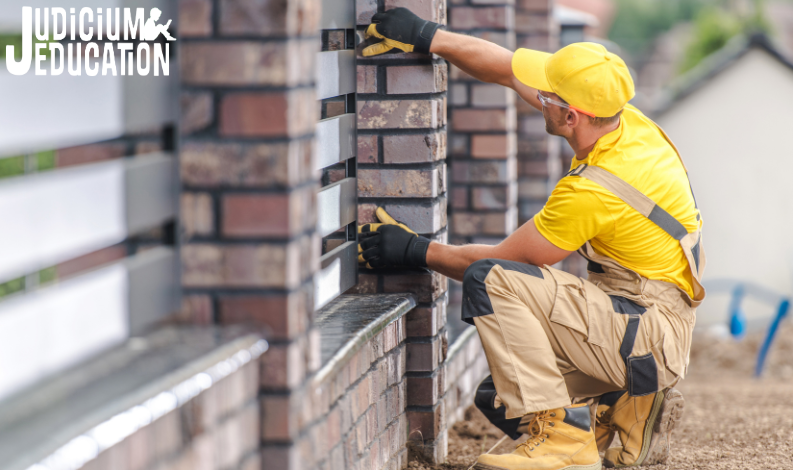The Do’s and Don’ts of Having Contractors On Site
_1000.png)
This blog is based on Judicium’s Health and Safety ‘Sofa Session’ from the 14th of March, with our resident experts Jamie Ashard, LLB (Hons), GradIOSH, DipNCRQ. This session focused on the legal requirements and importance of health and safety in school projects, your pre-contract health and safety assessment, contractor induction and training, tips for site-specific health and safety measures, and monitoring, audits and reviews.
Poll 1
.png)
Significance of Health and Safety in School Projects
Here are some things to consider when looking at building and improvement projects in schools:
- Projects are usually larger scale and require contractors with appropriate skills.
- These projects can have a range of risks such as asbestos, working at height, heavy machinery, noise, transport, etc.
- Often these are ‘out of the norm’ for the school.
- It’s important to consider the cost if things do go wrong.
CASE STUDY
In September 2018, a primary school in London were having roof works conducted in the summer holidays. The day before the students were set to return to school a fire broke out. This was caused by the contractors carrying out hot works which is usually conducted on the felting on the roof. The school had to make alternative arrangements for the pupils who were set to return to the school the next day.
Overview of the legal framework
- Under the Health and Safety at Work Act the school not only have duties to employees and pupils, but also to others such as the contractors working on site.
- CDM (Construction and Design Management Regulations 2015) have defined roles for those involved in construction. Usually, the school would be the client and must ensure the contractors are competent and have gone through a selection process to ensure suitability.
- Some works under CDM require notification to the HSE including if the work will last longer than 30 days and have more than 20 workers working at the same time. Also, if the work exceeds 500 person days.
Pre-contract health and safety assessment
Selecting a contractor and due diligence
Schools and trusts should have a managing contractors’ policy, which would include the process of selecting contractors. Considerations include:
- Previous experiences
- Accreditations
- Recommendations and reviews
- Ensuring the job is clearly defined and well planned.
Health and safety planning
Poll 2
.png)
Risk assessments and method statements should be obtained from all your contractors as these demonstrate they have adequately assessed the work and how they will conduct it.
A liability insurance certificate should also be obtained to confirm they have the appropriate insurance.
For smaller works, contractors may provide more generic risk assessments and method statements. However, for more extensive works or projects the risk assessments provided should be specific to the work being conducted.
Contractor induction and training
Contractors are usually unfamiliar with your site and need to be aware of your expectations. These should be stated in your managing contractor policy and in your contractor rules. We recommend these rules are signed by the contractor as their agreement to work in line with your school or trust’s procedures.
For complex works, clear definitions and communication need to be established between the contractors and the school, including:
- Restricted areas
- The times and dates contractors will be on site.
- Details regarding how access for your school or trust will continue during the work.
- Your expectations to ensure contractors leave the site clean.
Site-specific health and safety measures (emergency procedures and communication)
The school should ensure contractors are aware of the H&S arrangements including the location of first aid equipment, fire evacuation information and where to gain assistance from a first aider.
Contractors should be made aware of the school or trust’s evacuation plans and they should be included in any planned or unplanned evacuations. Ensure they are made aware of the assembly point and how to evacuate.
Contractors on site also need to know how to report any accidents or incidents, which should be included in the schools’ reporting procedures.
Monitoring and auditing
The school is responsible for contractors while they are on site and must ensure supervision is in place. Often schools will ensure supervision when the children are on site for safeguarding purposes, however, supervision is also required when pupils are not on site.
Supervision includes ensuring the contractors are working in line with their own risk assessment and method statement. Therefore, those supervising the contractors must be aware of what has been agreed between the school or trust and the contractor. Supervision does not mean having to watch over the contractors the whole time. However, they should be regularly supervised.
All staff should be empowered to raise any concerns directly with contractors if they see unsafe behaviour.
Three key takeaways
- All contractors are required to be adequately managed.
- Contractor selection is important as they must be competent.
- Communication between the school and contractors is vital.
Additional Information
Managing Contractors In Schools Training
The Health and Safety Service is also providing accredited training courses, including eLearning with specific modules ranging from courses designed for premises managers and SLT to all staff offerings: https://www.judiciumeducation.co.uk/elearning
We also offer live, exclusive training options https://www.judiciumeducation.co.uk/training
To review Judicium’s forthcoming sofa sessions please click here.
Follow us on Twitter - @JudiciumEDU
© This content is the exclusive property of Judicium Education. The works are intended to provide an overview of the sofa session you attend and/or to be a learning aid to assist you and your school. However, any redistribution or reproduction of part or all of the contents in any form is prohibited. You may not, except with our express written permission, distribute or exploit the content. Failure to follow this guidance may result in Judicium either preventing you with access to our sessions and/or follow up content.
Related content

This blog is based on Judicium’s Health and Safety ‘Sofa Session’ on the 15th of October, with our resident expert Mike Wright.

This prestigious award celebrates our commitment to delivering expert, education-specific Health & Safety support that lifts the burden for school teams while raising safety standards across the sector.

This blog is based on Judicium’s Health and Safety ‘Sofa Session’ from 18th June, led by resident expert , Mike Wright, CMIOSH. This session focuses on the control of substances hazardous to health (COSHH) and their relevance in school settings, how assessments should be undertaken and what staff could be at risk.

Discover why Judicium has been shortlisted for Fire Safety Consultancy of the Year at the 2025 FSM Awards, recognising our expert support for schools and trusts in delivering sector-specific, compliant, and practical fire safety solutions.
.png)
This blog is based on Judicium’s Health and Safety ‘Sofa Session’ from the 12th of March, with our resident expert Mike Wright.

This blog is based on Judicium’s Health and Safety ‘Sofa Session’ from the 26th of February, with our resident expert Loretta Igbe.

Sofa Sessions | H&S